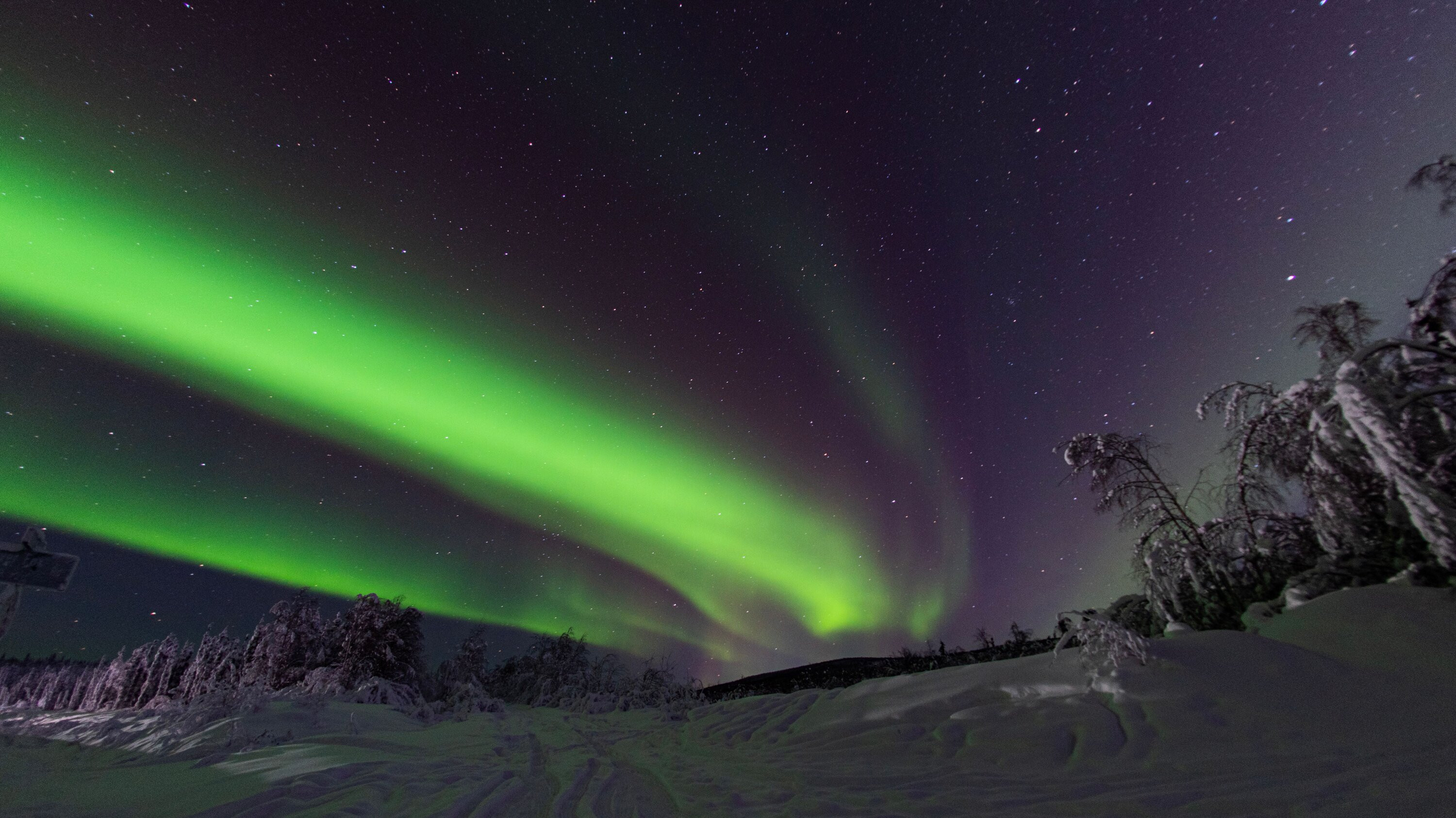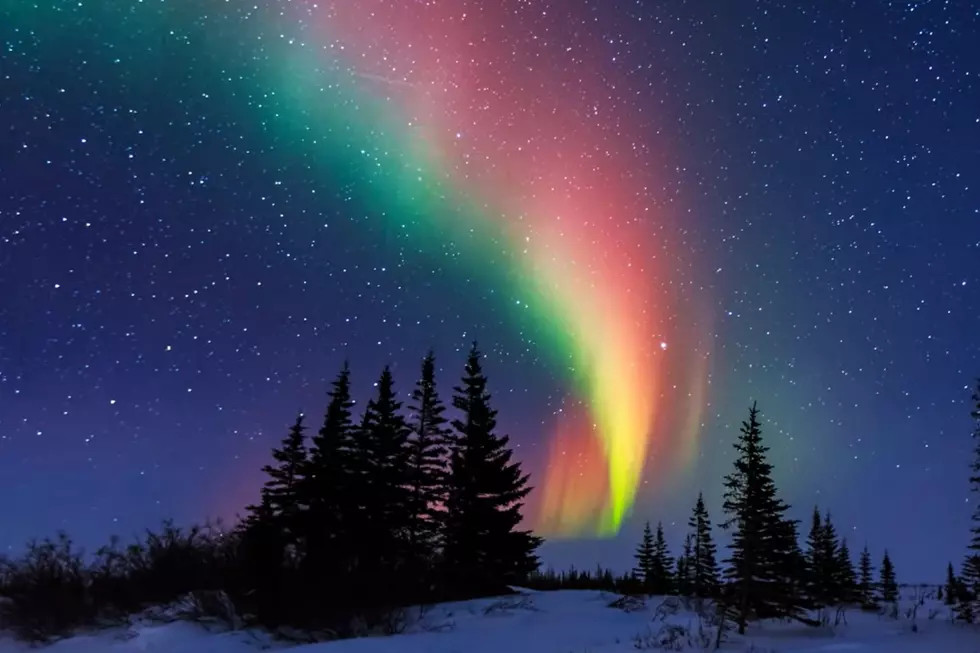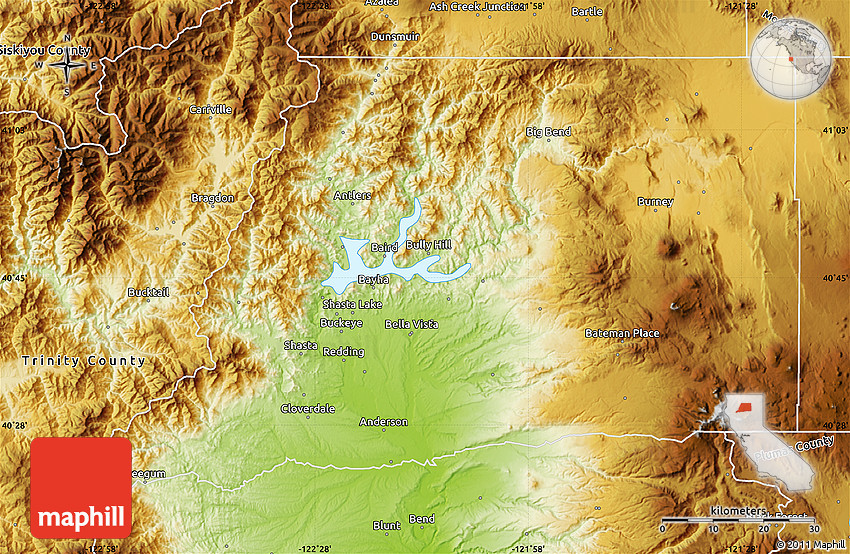The Northern Lights may be visible again this week after solar eruptions launched Tuesday, meaning some northern and Midwestern states may see the aurora Thursday.
The National Oceanic and Atmospheric Administration upgraded its moderate G2 geomagnetic storm watch for Thursday to a strong G3 watch or greater, which is likely to cause an increase in Northern Lights activity Thursday night.
Thursday night’s aurora Kp index was also bumped up to a seven, meaning the aurora will “move even further from the poles and will become quite bright and active,” according to NOAA.
A coronal mass ejection—an eruption of solar material—that happened early Tuesday is the cause of elevated geomagnetic activity, meaning the aurora may be visible in several northern and Midwestern states.
It’s hard to predict where the Northern Lights will show up, but they may be the most visible Thursday night in Canada and Alaska, according to NOAA. However, continental U.S. states within the aurora’s view line include parts of Washington, Oregon, Idaho, Montana, Wyoming, North Dakota, South Dakota, Nebraska, Minnesota, Iowa, Wisconsin, Illinois, Michigan, New York, Vermont, New Hampshire and Maine.
The lights are typically the most active between 10 p.m. and 2 a.m. For the best views of the Northern Lights, the agency advises traveling as close to the poles as possible, avoiding city lights and other light pollution, monitoring weather forecasts for prime viewing conditions and finding a position on a vantage point like a hilltop.
Smartphone cameras are sensitive enough to pick up the aurora, even when it’s invisible to the naked eye. Visit Iceland, a tourist website for Iceland, where the lights are often visible, advises turning on night mode to best increase smartphone camera exposure.
Solar Activity and the Northern Lights
Solar activity has been unusually busy in recent months as the sun’s 11-year solar cycle approaches its anticipated peak between late 2024 and early 2026, with sunspots expected to intensify over the next year, and likely triggering more geomagnetic storms.
Solar Cycle 25—the cycle the sun goes through around every 11 years—has been the cause of geomagnetic storms that have resulted in recent sightings of the Northern Lights, and NASA predicts it will continue on into next year. Cycle 25 began in Dec. 2019, and it’s estimated it will reach its maximum—when activity is expected to peak—between late 2024 and early 2026. It’s projected to peak with 115 sunspots, which are where geomagnetic storms originate. Although the maximum hasn’t happened yet, the sun’s activity has been busier than scientists anticipated, so it’s possible there will be even more geomagnetic storms leading up to 2026, though it’s difficult to predict exactly when these storms will occur.
215.5. That’s how many daily sunspots there were during the month of August, according to the Space Weather Prediction Center. This is the highest monthly sunspot number since Solar Cycle 23 averaged 238.2 spots in 2003.
Potential Disruptions
While the Northern Lights are a beautiful sight, geomagnetic storms can also cause disruptions to technology. While tonight’s storms are expected to be less intense, they could cause brief disruptions to precision GPS machinery like what farmers use to harvest crops, Grow Cei said.
A “moderate” geomagnetic storm was detected in Earth's atmosphere on Thursday morning, according to the Space Weather Prediction Center. A coronal mass ejection, or CME, was hurled from the Sun on Tuesday, according to the SWPC. The CME was just arriving to Earth on Thursday, and may last through Friday.
Thus far on Thursday, the storm was rated G2, which is considered moderate, according to SWPC. The storm is predicted to reach G3, or “strong” levels. By comparison, the storm that caused the aurora to be visible all over the Northeast back in May was rated G5, the highest on the scale, which spans G1-G5.
However, the arrival of the CME alone does not guarantee that an aurora will occur. The CME has a magnetic field, like a magnet. And just as opposite sides of magnets attract and like sides repel, the CME must be oriented the correct way, relative to Earth's magnetic field. Data from SWPC suggests that may not be the case, which could mean that despite a severe geomagnetic storm, an aurora would not be visible.
The fields can fluctuate, as can the strength of the storm. As the CME continues affecting Earth, more information will become available.
Viewing the Aurora
For those hoping to see the spectacle, the best chance comes after dark in areas away from bright city lights. Taking a picture with a smartphone camera may also reveal hints of the aurora that aren’t visible to the naked eye.
The sun’s magnetic field is at the peak of its 11-year cycle, making storms and aurora displays more frequent. Unusually strong solar storms in May produced vibrant aurora displays across the Northern Hemisphere.
Where to See the Northern Lights
The following continental U.S. states fall within aurora’s view line:
- Washington
- Oregon
- Idaho
- Montana
- Wyoming
- North Dakota
- South Dakota
- Nebraska
- Minnesota
- Iowa
- Wisconsin
- Illinois
- Michigan
- New York
- Vermont
- New Hampshire
- Maine
What are the Northern Lights?
Auroras are ribbons of light that weave across Earth's northern or southern polar regions, according to NASA.
Geomagnetic storms are caused by solar activity like solar flares or coronal mass ejections. The solar wind moves energetic charged particles from these events away from the sun to producer the northern lights.
Northern lights can be safely viewed without a telescope or microscope. The visibility of the aurora depends on multiple factors from location, weather, time of night and the level of geomagnetic activity presenting.
A Final Note
So, if you're in one of these lucky states, be sure to head outside after dark tonight and look up! You might just be treated to a stunning display of the Northern Lights.
Seeing Green: A Look at the Aurora’s Past and Future
The northern lights have been captivating people for centuries. From ancient myths to modern-day photography, the aurora has inspired awe and wonder. In recent years, with increased awareness of solar activity and advancements in technology, our understanding of the aurora has deepened. While the aurora is a natural phenomenon, it’s also a reminder of the powerful forces at play in our solar system. As the sun continues its cycle, we can expect to witness more displays of the aurora, both in its familiar northern reaches and perhaps even further south. As we gaze up at the dancing lights, we’re reminded of the interconnectedness of Earth and the sun, and the awe-inspiring beauty of the natural world.

















